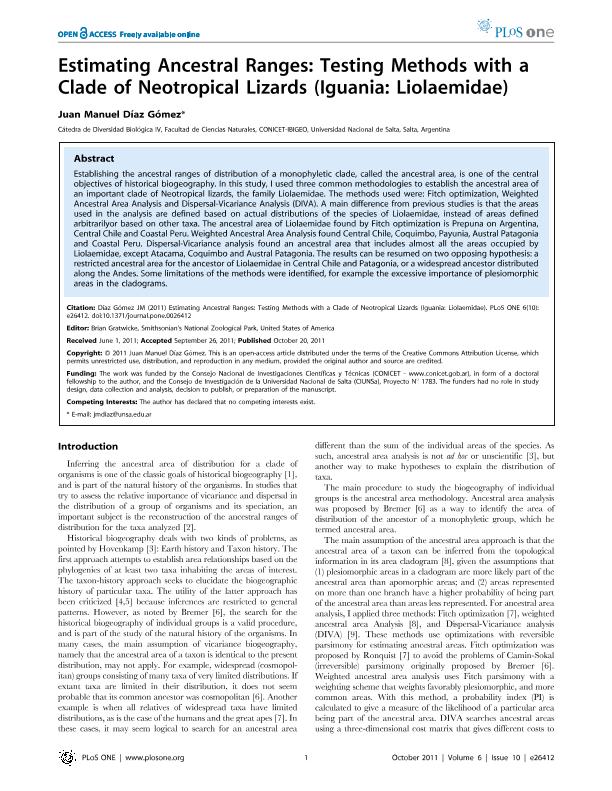Artículo
Estimating Ancestral Ranges: Testing Methods with a Clade of Neotropical Lizards (Iguania: Liolaemidae)
Fecha de publicación:
10/2011
Editorial:
Public Library Of Science
Revista:
Plos One
ISSN:
1932-6203
Idioma:
Inglés
Tipo de recurso:
Artículo publicado
Clasificación temática:
Resumen
Establishing the ancestral ranges of distribution of a monophyletic clade, called the ancestral area, is one of the central objectives of historical biogeography. In this study, I used three common methodologies to establish the ancestral area of an important clade of Neotropical lizards, the family Liolaemidae. The methods used were: Fitch optimization, Weighted Ancestral Area Analysis and Dispersal-Vicariance Analysis (DIVA). A main difference from previous studies is that the areas used in the analysis are defined based on actual distributions of the species of Liolaemidae, instead of areas defined arbitrarilyor based on other taxa. The ancestral area of Liolaemidae found by Fitch optimization is Prepuna on Argentina, Central Chile and Coastal Peru. Weighted Ancestral Area Analysis found Central Chile, Coquimbo, Payunia, Austral Patagonia and Coastal Peru. Dispersal-Vicariance analysis found an ancestral area that includes almost all the areas occupied by Liolaemidae, except Atacama, Coquimbo and Austral Patagonia. The results can be resumed on two opposing hypothesis: a restricted ancestral area for the ancestor of Liolaemidae in Central Chile and Patagonia, or a widespread ancestor distributed along the Andes. Some limitations of the methods were identified, for example the excessive importance of plesiomorphic areas in the cladograms.
Palabras clave:
Ancestral Areas
,
Biogeography
,
Diva
,
Liolaemidae
Archivos asociados
Licencia
Identificadores
Colecciones
Articulos(IBIGEO)
Articulos de INST.DE BIO Y GEOCIENCIAS DEL NOA
Articulos de INST.DE BIO Y GEOCIENCIAS DEL NOA
Citación
Diaz Gomez, Juan Manuel; Estimating Ancestral Ranges: Testing Methods with a Clade of Neotropical Lizards (Iguania: Liolaemidae); Public Library Of Science; Plos One; 6; 10; 10-2011; 1-12; e26412
Compartir




